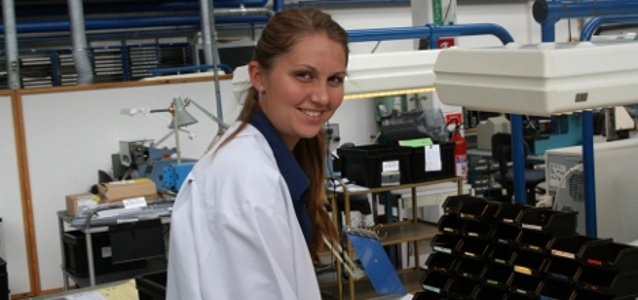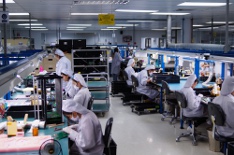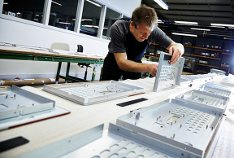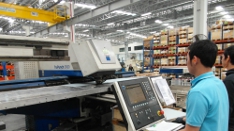
© GPV
Electronics Production |
GPV: Denmark hasn't lost its importance
Danish EMS-provider GPV, with a strong production footprint in Asia, has had a busy year. CEO Bo Lybæk gives his view on the year past and what lies ahead.
Danish EMS-provider GPV had, according to the 2012 year end report, revenues amounting to 718 million Danish kroner or 96 million euro. The company averaged 934 employees. The next fiscal year ends i march.So, with 2013 behind us, it is time to summarize the year for the industry. GPV, having a couple of months left in its current fiscal year (which runs until the end of March), kept busy: – It has, so far, been a year which did go as we planned. We had good load in our operations as well as in our strategic plan called “Cocus” – Core & Customers. We did manage to implement the business from the Danish company Connectt (which we acquired in June 2013) into our electronics business in Denmark. The same can be said about a number of larger projects in our other factories. We are also very pleased with the new mechanics factory in Bangkok and the production transfer to it. It was on time and on budget, and we did not miss any shipments, says CEO Bo Lybæk to Evertiq. So, with that update from the year past, let’s look ahead. What can we expect from GPV in 2014?
– Our main task will be the construction of and transfer to our new electronic facility in Bangkok. With this step we will double our EMS capacity. As a part of the new electronics factory, we have planned a number of investments in new equipment, mainly to expand our capacity but also to expand our capability within EMS. It is important to stress, says Bo Lybæk, that investing in Denmark – home turf for GPV – is still important alongside of the Asian production and we evaluate all good investment cases.
– In mechanics, we are investing to increase our Advanced Mechanics capabilities both in Denmark and Asia. An example is a new large 5-Axis milling center, a new surface treatment line, a new fully automated stamping center and a swing press center. In Denmark we have just received a CL1 welding certificate for welding of Railway equipment according to ISO 15085-2. Electronics and Mechanics – good neighbours The investment in our new facility in Bangkok is clearly the biggest of company's current projects. The need for additional capacity in the mechanics segment is one of the driving forces. So, what then does this mean practically speaking? – The increased capabilities within Advanced Mechanics enable us to handle more complex projects and demands. Also, the consolidation of Mechanics in Denmark and with our new mechanics factory in Bangkok we will have a more cost effective production set-up, especially on complex productions like assemblies and mechatronics products. How important is it for GPV to be able to handle both electronics and mechanical projects? – We see our internal mechanical competencies as a unique selling point, since “just” doing electronics assembly is not what our customers want. Being able to handle complex logistics, helping in the product development phase and to have mechanical in-house competencies and production are important parts of our offering to the market. Of course you can use an external supplier for mechanical parts, but we see our position as much stronger when we actually have detailed knowledge of the different processes that are required. You are positioned on a very global level with a strong footprint in Thailand. How important is the Nordic and European market for you, and how big is your footprint when it comes to selling directly to customers in Asia?
– Europe is our home market and this is where we come from, but in line with our customers moving production to i.e. Asia, we support this move and deliver to our customers worldwide. GPV has also in the resent years focused more on North America, were we see increased demand for our offerings. Bo Lybæk concludes: – Last year GPV delivered into more than 30 different countries and we expect this figure to increase in the future. Europe is still our main market, but the growth will come from North America, Mexico and Asia. All images © GPV.




